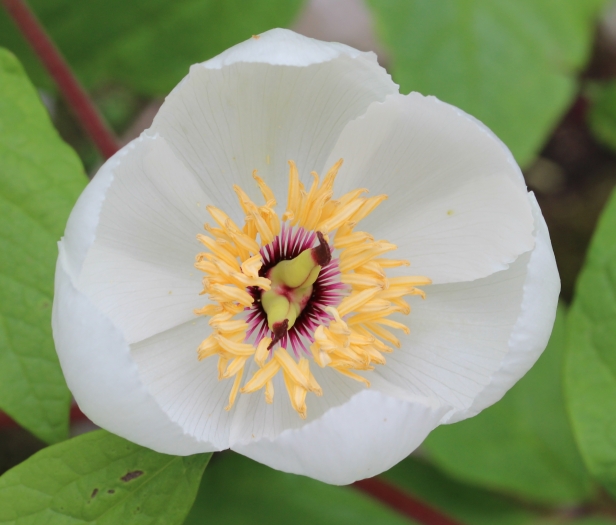Woodland Peony
(Paeonia obovata)
Woodland Peony (Paeonia obovata)
/
/

Alpsdake
CC BY-SA 3.0
Image By:
Alpsdake
Recorded By:
Copyright:
CC BY-SA 3.0
Copyright Notice:
Photo by: Alpsdake | License Type: CC BY-SA 3.0 | License URL: https://creativecommons.org/licenses/by-sa/3.0 | Uploader: Alpsdake | Publisher: Wikimedia Commons | Title: Paeonia_japonica_flower.JPG |



























Estimated Native Range
Summary
Paeonia obovata, commonly known as Woodland Peony, is a deciduous perennial herb that is native to the understory of temperate deciduous forests in East Asia, including regions of China, Korea, Japan, and Siberia. It typically grows to a height of 30–70 cm. The plant features a clump-forming habit with attractive, deeply lobed leaves, and its lower leaves are composed of no more than nine leaflets or segments. Woodland Peony is particularly noted for its large, solitary flowers that bloom in May and June, which can be white, pink, or purple-red, and are moderately showy. The flowers give way to dehiscent seed pods that split open in September to reveal attractive seeds with a fleshy, blue-black outer coat that is appealing to ants, which aids in seed dispersal.
Woodland Peony is valued for its ornamental flowers and foliage, as well as its adaptability to shade gardens. It is often used in woodland plantings, shaded borders, and naturalized areas. This species is relatively low-maintenance, requiring medium amounts of water and thriving in a variety of soil types, provided they have good drainage. It prefers part shade but can tolerate full sun in cooler climates. While generally disease-resistant, it can be susceptible to peony blight (Botrytis) and should be monitored for this condition. Additionally, it is important to avoid planting too deeply, as this can prevent flowering.CC BY-SA 4.0
Woodland Peony is valued for its ornamental flowers and foliage, as well as its adaptability to shade gardens. It is often used in woodland plantings, shaded borders, and naturalized areas. This species is relatively low-maintenance, requiring medium amounts of water and thriving in a variety of soil types, provided they have good drainage. It prefers part shade but can tolerate full sun in cooler climates. While generally disease-resistant, it can be susceptible to peony blight (Botrytis) and should be monitored for this condition. Additionally, it is important to avoid planting too deeply, as this can prevent flowering.CC BY-SA 4.0
Plant Description
- Plant Type: Herb
- Height: 1-2 feet
- Width: 1-2 feet
- Growth Rate: Moderate
- Flower Color: Pink, Purple, White
- Flowering Season: Spring
- Leaf Retention: Deciduous
Growth Requirements
- Sun: Part Shade
- Water: Medium
- Drainage: Slow, Medium, Fast
Common Uses
Bee Garden, Bird Garden, Butterfly Garden, Deer Resistant, Drought Tolerant, Fragrant, Hummingbird Garden, Rabbit Resistant, Showy Flowers
Natural Habitat
native to the understory of temperate deciduous forests in East Asia, including regions of China, Korea, Japan, and Siberia
Other Names
Common Names: Obovate Peony, Chinese Peony, Lackpion, 산작약, Cao Shao Yao, Sanhambagkkot
Scientific Names: , Paeonia obovata, Paeonia japonica, Paeonia obovata var. glabra, Paeonia oreogeton, Paeonia japonica var. pilosa, Paeonia vernalis, Paeonia obovata subsp. japonica, Paeonia obovata f. oreogeton, Paeonia obovata var. alba
GBIF Accepted Name: Paeonia obovata Maxim.